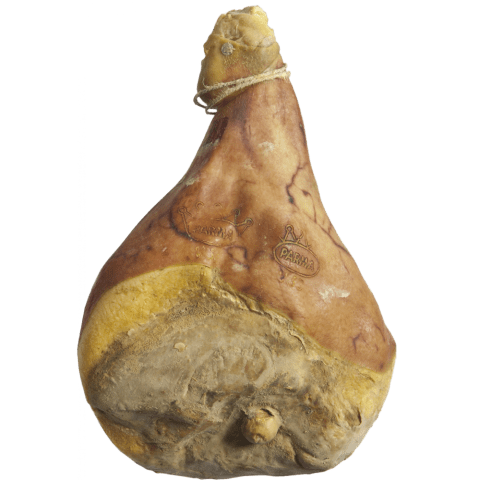rosciutto di Parma DOP Riserva 24 months
Like many Italian foods, all prosciutto crudo does not taste the same, thanks to regional biodiversity and culinary customs. Prosciutto di Parma is a specific variety of cured pork made according to certain traditions. In Parma, a town in the heart of Emilia Romagna, making prosciutto is part of an age-old tradition passed on from generation to generation. In fact, prosciutto di Parma dates back thousands of years to Roman times. To make this variety of prosciutto, producers must follow strict legal guidelines which are closely monitored by the Consorzio Prosciutto di Parma. The time-honored methods are 100% natural: no additives, just sea salt, air, and time. The legs are salted by hand by a maestro salatore, or "salt-master," then left to rest at cool temperatures for one week. After that, the meat is salted a second time and left to set for another two weeks. Next. the salted pork is hung in refrigerated, humidity-controlled rooms between 60 to 90 days. This ensures that the meat properly absorbs the salt. After the proper amount of time, the hams are washed and brushed before moving on to the curing process.

